Beholding the Tree of Life: A Rabbinic Approach to the Book of Mormon
$21.95
- “Breaks fresh ground in numerous ways.” — Terryl L. Givens
- “The results are not only interesting, they are inspiring.” — James E. Faulconer
- “A quiet master class in how to read scripture carefully in a way that unleashes powerful spiritual meaning.” — Jason A. Kerr
- “A stimulating and deeply enriching experience.” — Richard Dillworth Rust



Available in ebook for Kindle, Nook, Kobo, Google Play, and Apple.
Also available through Amazon and Deseret Book.
Download a free sample preview.
Part of our Contemporary Studies in Scripture series
Book Description:
Too often readers approach the Book of Mormon simply as a collection of quotations, an inspired anthology to be scanned quickly and routinely recited. In Beholding the Tree of Life Bradley J. Kramer encourages his readers to slow down, to step back, and to contemplate the literary qualities of the Book of Mormon using interpretive techniques developed by Talmudic and post-Talmudic rabbis. Specifically, Kramer shows how to read the Book of Mormon closely, in levels, paying attention to the details of its expression as well as to its overall connection to the Hebrew Scriptures—all in order to better appreciate the beauty of the Book of Mormon and its limitless capacity to convey divine meaning.
Using Beholding the Tree of Life to Start a Jewish-Style Book of Mormon Study Group:
Studying Torah at a local synagogue has also transformed how I approach the Book of Mormon, so much so that I wrote a book about it, Beholding the Tree of Life: A Rabbinic Approach to the Book of Mormon. In this book, I attempted to show how productive this very Jewish way of studying the Scriptures is when applied to the Book of Mormon. Consequently, in this book I not only described this approach in detail, but I included many insights I discovered while using it on the Book of Mormon. I was impressed by these insights and thought that others might be impressed as well. However, I in no way thought that these insights were all or even the best this approach could produce. I offered them simply as examples, as samples of what could be unearthed as they studied the Book of Mormon closely, carefully, in this very collaborative, very communal, very spiritually constructive way.
In other words, I was attempting to recreate my Torah class experience for others and to encourage them to study not just the Books of Moses but the books of Nephi, Jacob, Enos, Jarom, Omni, Mosiah, Alma, Helaman, Mormon, Ether, and Moroni as well. And along these lines I now offer several lessons—notes really—that help start up this kind of Jewish-style study group.
Comprehensive Table of Contents:
.
Acknowledgments
Preface
Part 1. Contemplating the Branches
1. The Fruit and the Tree
The Book of Mormon and the Quotation-centered Approach to Scripture
The Book of Mormon and the Rabbinic Approach to Scripture
The Book of Mormon and the Tree of Life
2. Reading on Multiple Levels
Peshat
Remez
Derash
Sod
3. Reading Closely
Hebrew Roots
Opening Sentences
The Contiguity Principle
Similarities between Different Texts
Differences between Similar Texts
Redundancies and Repetitions
Word Order
4. Reading with Others
Chavrutot
Nephi as Chavrutah
Other Chavrutot
Rabbinic Commentators
Mormon as Commentator
Judging Every Person in a Favorable Light
Part 2. Appreciating the Roots
5. Roots and Branches
The Rabbinic Connection between the Torah and the Prophets
The Connection between the Book of Mormon and the Hebrew Scriptures
6. Reinforcing a Point
Addressing the Period of Prophets
Affirming the Words of the Prophets
Affirming the Position of the Prophets
Affirming the Value of Prophets
7. Rendering an Academic Point Applicable
Addressing the Period of Kings
Affirming the Danger and Benefit of Kings
Resolving the Scriptural Issue
Expanding the Idea into a Principle
Applying the Principle
8. Translating an Ancient Situation into Modern Terms
Addressing the Period of Judges
Affirming the Cycle of Sin
Developing the Concept of Prosperity
Updating the Idea of License
Modernizing the Form of Punishment
Demilitarizing the Method of Deliverance
9. Increasing Significance
Addressing the Period of Receiving the Law
Connecting before Sinai
Connecting at Sinai
Connecting after Sinai
Fulfilling the Law
10. Providing Prophetic Hope
Increasing Significance
Translating an Ancient Situation into Modern Terms
Reinforcing a Point
Offering Advice and Encouragement
Conclusion
Glossary
Bibliography
Scripture Index
Hebrew Scriptures
New Testament
Book of Mormon
Subject Index
Q&A with the Author:
.
Q: In a nutshell, what is a rabbinic approach?
A: In a peanut shell, a rabbinic approach involves reading scripture as a God-given work of literature, scrutinizing it closely, considering it broadly, all in order to gain from it spiritual enlightenment and practical application. In a larger shell, it means employing a number of specific interpretive techniques and principles used by Talmudic and post-Talumidic rabbis in order to experience the divine by seeing and appreciating the Scriptures’ more subtle messages in concert with other readers. In Beholding the Tree of Life, I have tried to describe a few of these techniques and principles and to show how they can be applied to the Book of Mormon.
Q: Is a rabbinic approach synonymous with a Jewish approach? I mean, do all Jews read their scriptures this way?
A: No. Jews are an extremely intellectually diverse people, especially when it comes to how they approach scripture. There are non-religious Jews, of course, who, if they read the Hebrew Scriptures at all, read them as interesting folklore or as entertaining fiction. But even religious Jews, those who do read the Hebrew Scriptures as scripture, do not do so uniformly. Orthodox and Ultra-orthodox Jews, for the most part, consider the five books of Moses, the Torah, to be dictated directly by God and therefore hang on its every word and scrutinize its every possible nuance. Conservative Jews tend to consider the biblical books as inspired by God but not necessarily wholly divine. They consequently take the scriptures seriously but, since these scriptures were put together by mortals living in distant times and writing to distant audiences, do not always consider their ideas to be relevant to or binding on them. Reform and Reconstructionist Jews frequently take the Conservative position further and think of the Bible as an important work that contains much wisdom, but it is still a product of the human mind and spirit. They therefore often pick and choose passages from their scriptures that coincide with their life experience and their view of the world. Nonetheless, despite this great diversity, many Jews, especially the religious ones, still consider the interpretations and interpretive approach used in the Talmud and other rabbinic sources to be worth knowing and to some degree emulating.
Q: You mentioned the Talmud. What is it?
A: The Talmud is essentially a compilation of ancient conversations about Jewish law. It consists of two parts: the Mishnah and the Gemara. The Mishnah was compiled around 200 C.E. by Judah the Prince and is a relatively compact and well-organized presentation of the traditions concerning prayers, blessings, Jewish festivals, marriage, divorce, disputes with other Jews, and other issues that had been preserved orally up until that time.
The Gemara is a later commentary on the Mishnah and is organized much like the Mishnah, using the same basic organization and tractate names only vastly expanded. After the Mishnah was published, it was discussed extensively for generations in rabbinic academies. There rabbis continued the oral tradition by building upon what had gone before—by discussing new considerations, incorporating additional circumstances, adding material not previously included, and generally expanding, deepening, and complicating the ideas and policies covered by the Mishnah. Eventually, these wide-ranging, often freely-associated discussions were written down, edited, and joined with the Mishnah to form the Talmud—actually two Talmuds, one compiled in Palestine and one in Babylonia. Because it was compiled later and is larger and more thorough that the Palestinian Talmud, the Babylonian Talmud is studied and used more frequently. It is also the Talmud I refer to in my book.
Q: If the Talmud is mostly commentary on Jewish law, what is its connection to scriptural interpretation?
A: Well, because the Talmudic rabbis were attempting to translate biblical principles and laws into practice, they naturally referred to scripture frequently, as a matter of course. Many of the examples they use come from the Hebrew Scriptures as do the evidence they cite, the stories they tell, and the concepts they relate. Consequently, not only are their interpretations of scripture studied by rabbinic Jews but so is how they arrived at those interpretations.
In addition, these same rabbis, as well as their successors, wrote extensive commentaries on the Torah and other biblical works and provided explicit advice and counsel as to how to study scripture and approach it constructively.
Q: So, if the rabbinic approach is as intimately connected, as you say, to the Hebrew Scriptures why use it on the Book of Mormon? Are you saying that Nephi and Mormon and Moroni knew about this approach and employed it purposely?
A: No. Rabbinical Judaism began around 70 c.e. when the Second Temple was destroyed and the emphasis in Jewish worship began to turn from sacrifice to prayer and scripture study. Separated from these first rabbis by great distances in time and space, Nephi, Mormon, and the other Book of Mormon writers knew no more about rabbinic thought than did Moses, Isaiah, or Ezra. However, for the same reasons that the rabbinic approach works for the Hebrew Scriptures, it also works for the Book of Mormon. Both the Hebrew Scriptures and the Book of Mormon contain extended narratives, stories that are meant to convey messages about and from God. Consequently, an understanding the interaction of character, plot, setting, description, and other, sometimes subtle, literary elements is vital to an appreciation of both of these books. As I try to show in my book, using rabbinic techniques attunes readers to these literary elements and greatly enhances their experience with the Book of Mormon religiously as well as intellectually.
Q: But don’t serious readers of the Book of Mormon do this already?
A: To some degree, certainly. I mean, the Book of Mormon contains such interesting narratives, with compelling characters, complex plots, and though-provoking situations, that few readers can avoid approaching it, at least a little, as a literary work. In addition, the fact that a sizable portion of the Book of Mormon is told by first-person narrators, who relate their stories personally, letting readers into their thoughts and after-thoughts, also encourages readers to approach it as a well-told story. My book is intended to reinforce this impulse and to “super-charge” it, in a sense, by providing helpful examples from the works of people who have studied scriptural narratives for centuries and have found seemingly limitless meaning in them. In this way, I hope to encourage all serious readers of the Book of Mormon to similarly find more meaning in it, by reading it closely, in levels, with others. I also hope to help these readers appreciate the close connection the Book of Mormon has with the Hebrew Scriptures—not just in how the two are studied but in the way the issues, ideas, characters, and plots resonate with each other and support and enhance each other.
Q: How did you get interested in this approach?
A: That is a very long story. Suffice it so say that my feelings about and understanding of Mormonism has, at least since my teenage years, been intertwined with my feelings about and understanding of Judaism. Growing up as a Mormon in Cincinnati, I was a member of a very small minority. There were only two wards in Cincinnati at the time and I was frequently the lone Mormon in my schools. As a result, I often felt that there was something about me that others did not understand and I, with my meager knowledge of Mormonism, could not explain. Consequently, when in high school I came across the novels of Chaim Potok, which describe Hasidic Jews growing up with similar minority feelings, I immediately connected with them. Danny and Reuben and Asher and David became my close friends and by their example they encouraged me to embrace my religion more openly and to engage it more deeply and rigorously.
Later, as a freshman at BYU, I took classes in the Book of Mormon, but I also took classes in Hebrew, an approach that seemed to complement both subjects. On my mission in southern Florida, I attended lots of LDS meetings and conferences, but I also occasionally attended Jewish services as well. Because of my interest in Judaism, my mission president encouraged me to do this. Obviously, he wanted me to teach Jews (something I was not very successful at), but he also wanted me to learn about Jews as well. This I did, reading books on Judaism and taking every opportunity to talk to Jews, and attempting to study the Book of Mormon from a Jewish perspective.
It was there then, on my mission, that I first began to see how the Book of Mormon was written for Jews and how it opened up when approached from a Jewish viewpoint. My view of such things expanded greatly when I went to graduate school and studied English Literature with Richard D. Rust. In addition to educating me about the literary qualities of The Scarlet Letter and Moby-Dick, Professor Rust, during personal tutorial sessions, opened my mind to the literary qualities of the Book of Mormon in glimpses, qualities he later wrote about in his landmark book Feasting on the Word: The Literary Testimony of the Book of Mormon.
As Dr. Rust explained his ideas, naturally my mind went back to what I had learned about Jews on my mission, and I began building upon Dr. Rust’s work in my own way—expanding my knowledge of Hebrew, acquiring a vast library of Jewish books, reading rabbinic works, attending Jewish services and events, participating in Torah and Talmud classes, and discussing my ideas with my Jewish friends. I started writing down what I found as I applied these ideas to the Book of Mormon. One thing led to another, and in the short space of just two decades, I found that I had produced a book.
Q: Who is your targeted audience?
A: I wrote this book for anyone interested in enhancing her or his experience with the Book of Mormon. I did not write it for specialists in Jewish thought or scholars of ancient scripture, although I hope this book would interest them. I mainly attempted to give serious readers of the Book of Mormon more tools to use to explore it and encouragement to delve into it more deeply. As I mention in the book, I hope readers will use these tools and techniques to eclipse my own insides. Beholding the Tree of Life is intended as the beginning of a discussion, not the last word.
Q: What do you hope will come of this book?
A: I hope the LDS appreciation of the Book of Mormon will grow and deepen. I hope the principles and techniques described in this book will open the eyes of readers of the Book of Mormon and will help them see better both the beauty and the depth of the Book of Mormon. I hope that it will encourage readers to slow down, to step back, and to contemplate the Book of Mormon more thoroughly and that they will discuss it with others more appreciatively and feel closer to God. I also hope that Mormons will have a better understanding of Jews and appreciate the way they approach scripture. This makes for a tall order, I know, and it asks a lot of one little book. However, the Book of Mormon is different from other books. I believe it is up to the task once it is opened up properly. My book just twists the door knob. I am confident that the Book of Mormon will do the rest.
Q: Are you working on any future projects?
A: Yes, as a matter of fact, I have nearly finished another book and hope to have it out next year. As I have studied the Book of Mormon closely, approaching it rabbinically, in a literary way, I have noticed how the Book of Mormon not only affirms a Jewish way of reading scripture but confirms their value to God and their continuing place in his covenant. This is significant because ever since the Holocaust, most mainstream Christian churches have attempted to purge themselves of anti-Jewish, supersessionist ideas, which could have contributed to this catastrophe. These efforts have been limited, however, by their commitment to the New Testament, a scripture which, as beautiful and inspiring as it is, frequently seems to condemn Jews in subtle, literary ways. As a result, many churches advocate presenting certain passages from the New Testament, if at all, very carefully, with lengthy explanations or modifications.
The Book of Mormon, however, attacks this problem head-on and on its own terms. Using powerful and pervasive pro-Judaic literary elements, it effectively counters the New Testament’s anti-Jewish literary elements and does so respectfully, without undermining the New Testament’s authority or spiritual dependability. Much as the gospels, though different, join together as equals to create a more complete portrait of Jesus, so the Book of Mormon unites with the New Testament as its scriptural peer to offer a more complete and more positive view of Jews. In this way, the text of the New Testament is not altered, but its meaning with respect to Jews is modified. Its anti-Judaic criticism becomes less universal, more limited to a certain time and place, and certainly less final.
Praise for Beholding the Tree of Life:
“Latter-day Saints have claimed the Book of Mormon as the keystone of their religion, but it presents itself first and foremost as a Jewish narrative. Beholding the Tree of Life is the first book I have seen that attempts to situate the Book of Mormon by paying serious attention to its Jewish literary precedents and ways of reading scripture. It breaks fresh ground in numerous ways that enrich an LDS understanding of the scriptures and that builds bridges to a potential Jewish readership.” — Terryl L. Givens, author of By the Hand of Mormon: The American Scripture that Launched a New World Religion
“Bradley Kramer has done what someone ought to have done long ago, used the methods of Jewish scripture interpretation to look closely at the Book of Mormon. Kramer has taken the time and put in the effort required to learn those methods from Jewish teachers. He explains what he has learned clearly and carefully. And then he shows us the fruit of that learning by applying it to the Book of Mormon. The results are not only interesting, they are inspiring. This is one of those books that, on reading it, I thought ‘I wish I’d written that!'” — James E. Faulconer, author of The Book of Mormon Made Harder and Faith, Philosophy, Scripture
“Since readers of the Book of Mormon are directed to ponder on and search out the deeper meanings of this scriptural record designed for our day, they would gain much from Beholding the Tree of Life by Bradley J. Kramer. In this well-written and engaging work, Kramer calls on processes of thinking about and studying the scriptures as inculcated by Talmudic and post-Talmudic rabbis. In doing so, Kramer guides us in attentive ways of reading the Book of Mormon that are stimulating and productive.” — Richard Dilworth Rust, author of Feasting on the Word: The Literary Testimony of the Book of Mormon
“Beholding the Tree of Life opens up the Book of Mormon to deeper, fuller readings by nourishing its Jewish roots with the application of the Rabbinic tradition of scripture study. It advocates a continuous practice of careful, systematic scripture reading as an essential form of individual and communal worship, consistent with current LDS practice but with a richer awareness of the long tradition behind it. Without being the slightest bit tedious or obscure, Bradley Kramer presents an original approach to Book of Mormon study that everyone can appreciate and apply.” — Phillip A. Snyder, English Department Chair at Brigham Young University
“Beholding the Tree of Life is a quiet master class in how to read scripture carefully in a way that unleashes powerful spiritual meaning. Always clear and never condescending, Kramer patiently introduces readers to Jewish ways of reading that have, for centuries, kept scripture relevant to the lives of faith communities. While focused on the Book of Mormon, Beholding the Tree of Life also invites readers to feast on the Hebrew Scriptures, while showing how the Book of Mormon profoundly complements its Hebrew counterpart. If applied widely, the methods of reading taught and exemplified in this book promise to make our discussions of scripture at home and in church all the richer.” — Jason A. Kerr, visiting assistant professor of English at Brigham Young University
“Bradley Kramer sets forth tools developed through centuries by rabbis that help one connect to Jewish modes of studying scripture and help one find greater meanings in the Book of Mormon. . . . a stimulating and deeply enriching experience to feast on the fruit of the Tree, the words of Christ.” — Richard Dillworth Rust, BYU Studies Quarterly
About the Author:
 Bradley J. Kramer holds an MA in English from the University of North Carolina at Chapel Hill and a BA in English from Brigham Young University with a minor in Near Eastern Studies. As the son of an LDS mother and a non-LDS father, he has had a life-long interest in interfaith dialogue. For the last several years, he has been a regular participant in Torah and Talmud classes at a local synagogue in Durham, North Carolina, and has helped arrange joint Mormon-Jewish study sessions and other educational exchanges. He has also given several presentations to local and regional groups on the affinities between Mormons and Jews and is a regular speaker at comparative religion classes. Bradley has worked professionally as a writer and editor and is married to the former Nancy Lubeck. They have three children and three grandchildren.
Bradley J. Kramer holds an MA in English from the University of North Carolina at Chapel Hill and a BA in English from Brigham Young University with a minor in Near Eastern Studies. As the son of an LDS mother and a non-LDS father, he has had a life-long interest in interfaith dialogue. For the last several years, he has been a regular participant in Torah and Talmud classes at a local synagogue in Durham, North Carolina, and has helped arrange joint Mormon-Jewish study sessions and other educational exchanges. He has also given several presentations to local and regional groups on the affinities between Mormons and Jews and is a regular speaker at comparative religion classes. Bradley has worked professionally as a writer and editor and is married to the former Nancy Lubeck. They have three children and three grandchildren.
More Information:
247 pages
ISBN 978-1-58958-701-4 (paperback); 978-1-58958-702-1 (hardcover)
Published November 2014

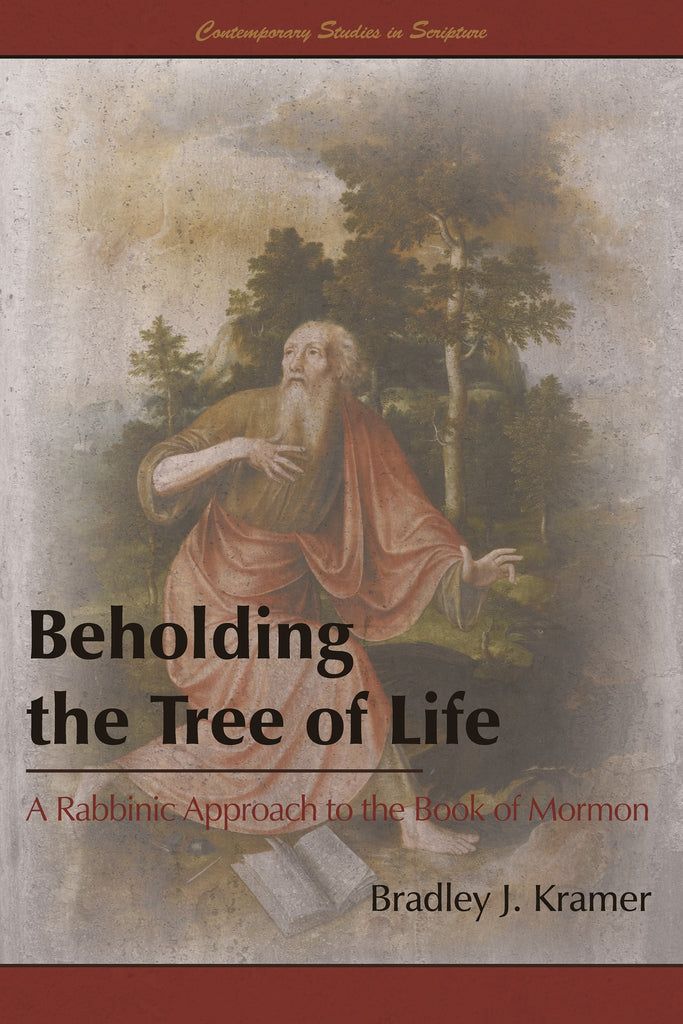

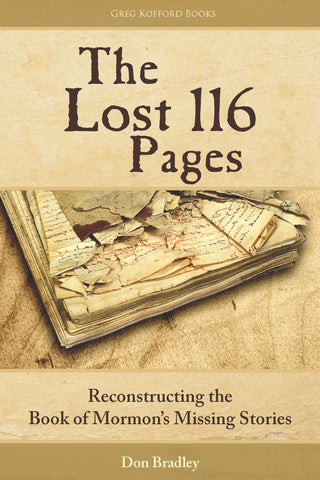
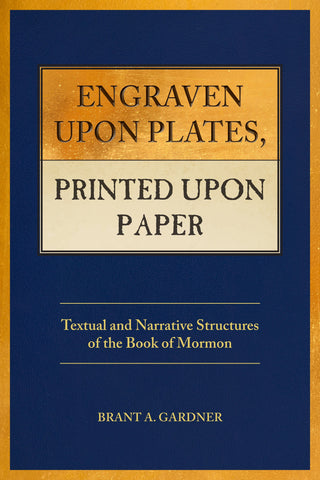
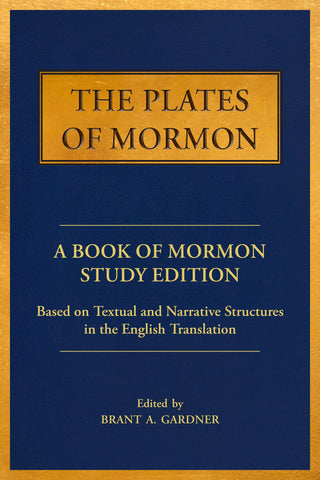
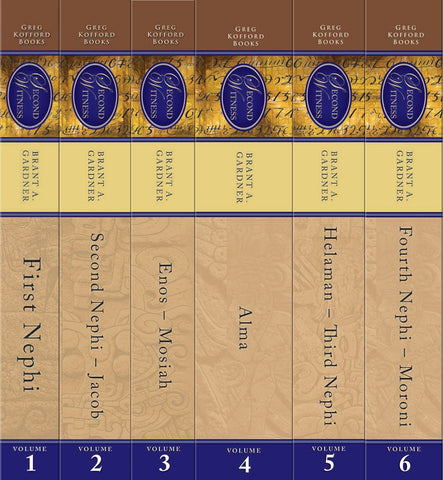
Share this item: